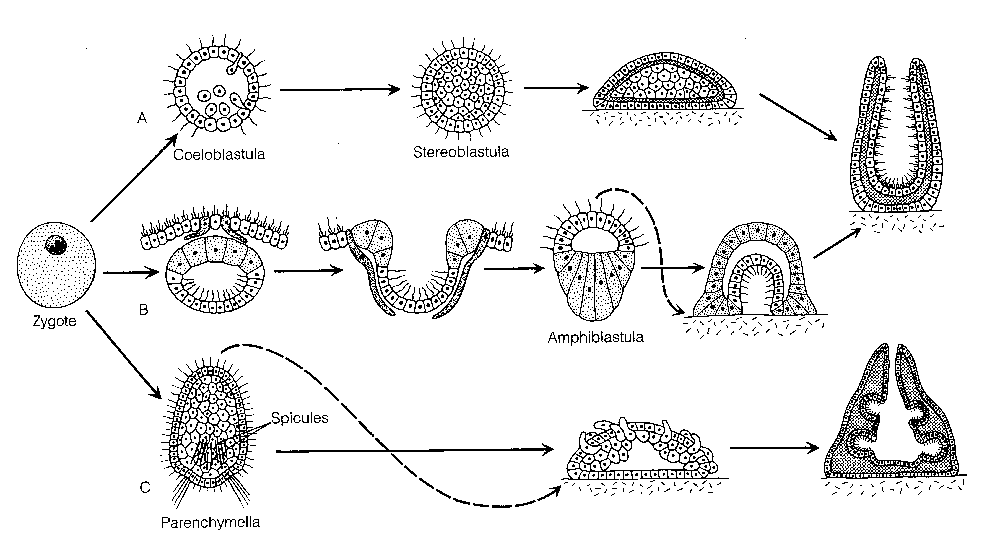
| MadSci Network: General Biology |
Hi Ashley,
Thanks for sending your class's question to MadSci! Since I love the invertebrates, I'm especially happy to be answering a question about sponges.
You and your classmates probably already know that sponges are almost all hermaphroditic, functioning as both male and female. I consulted my two most recent invertebrate zoology texts, and found slightly different accounts of sexual reproduction in sponges. I'll try to consolidate and condense the information for you. In general, sperm are shed into the water column and picked up by the filtering apparatus of another sponge; fertilization occurs within the body of the recipient. Most species are considered viviparous, meaning that the zygotes are retained within the parent's body, and after a period of development larvae are released into the water. A few species release the zygotes into the water. Some sponge species release both eggs and sperm into the water, and fertilization occurs externally.
Once fertilization has occurred, either internally or externally, one of three types of planktonic larvae can be formed. A coeloblastula larva is a hollow ball of flagellated cells that becomes a solid stereoblastula. An amphiblastula larva begins as a hollow ball of cells and gradually develops an anterior end of flagellated cells and a posterior end of nonflagellated cells. A parenchymella larva is a solid mass of cells with an outer layer flagellated and non-flagellated cells. Here's a diagram (taken from Ruppert et al, 2004) of the different types of sponge larvae and the metamorphoses they undergo on their way to becoming baby sponges:

Sponge larvae live in the plankton for a short period, sometimes just a few hours, then settle on the bottom and metamorphose into a juvenile form. Once settled and metamorphosed, they take up the parental lifestyle of filtering water.
For additional information on sponges, check out these web sites:
http://
www.ucmp.berkeley.edu/poriferalh.html
http://animaldiversity.unmz.umich.edu/site/accounts/information/
Porifera.html
I hope this answers your question!
Allison J. Gong
MAD Scientist
References:
Ruppert, E. E.; Fox, R. S. and Barnes, R. D. 2004. Invertebrate Zoology, seventh
edition. Brooks/Cole.
Brusca, R. C. and Brusca, G. J. 2003. Invertebrates. Sinauer Associates, Inc.
Try the links in the MadSci Library for more information on General Biology.